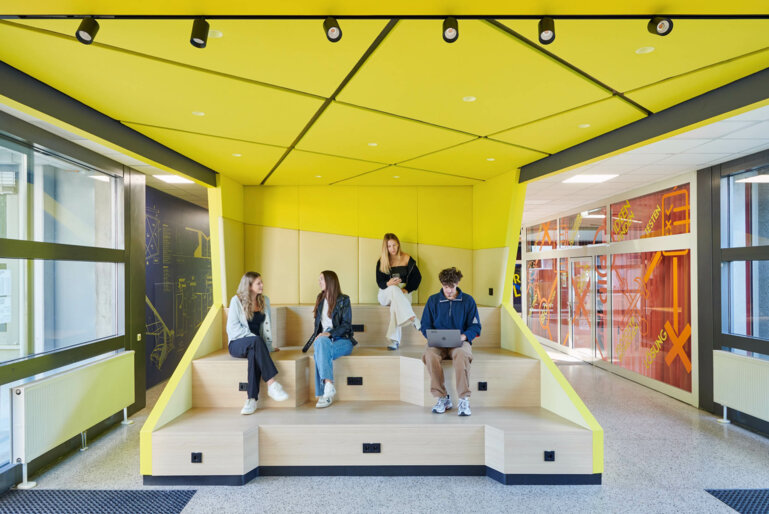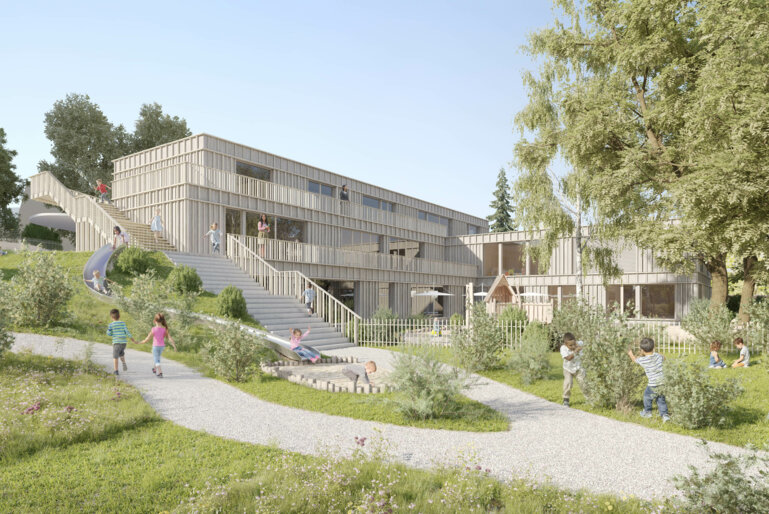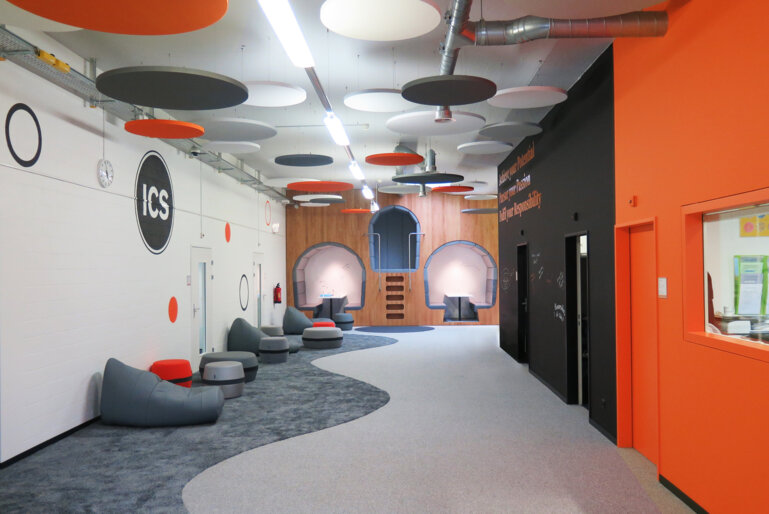Education
Education is undergoing a profound shift, shaped by rapid technological advances, demographic changes, increasing competition in higher education, and a move from traditional lectures to coaching-based approach. These changes are creating a new, contemporary learning culture – and with it, new demands on the spaces where learning happens.
For students, the physical learning space must offer unique opportunities for learning and collaboration, providing a compelling reason to choose in-person attendance over online studies.
Modern, flexible, and adaptable physical spaces are equally important for education staff. These environments must meet diverse requirements – from in-person teaching and hybrid presentations to collaboration with colleagues and focused, uninterrupted work.
Drawing on this understanding, we design and develop future-ready learning environments – from primary schools to universities and libraries – creating spaces that meet today’s needs and adapt to tomorrow’s challenges, enabling people to connect, learn, and thrive.
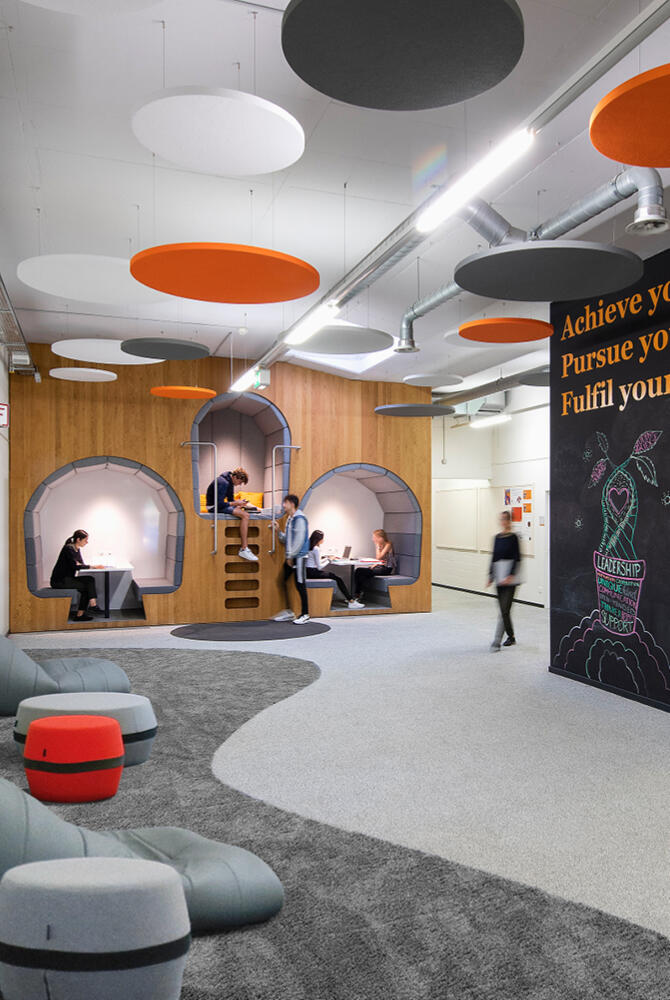
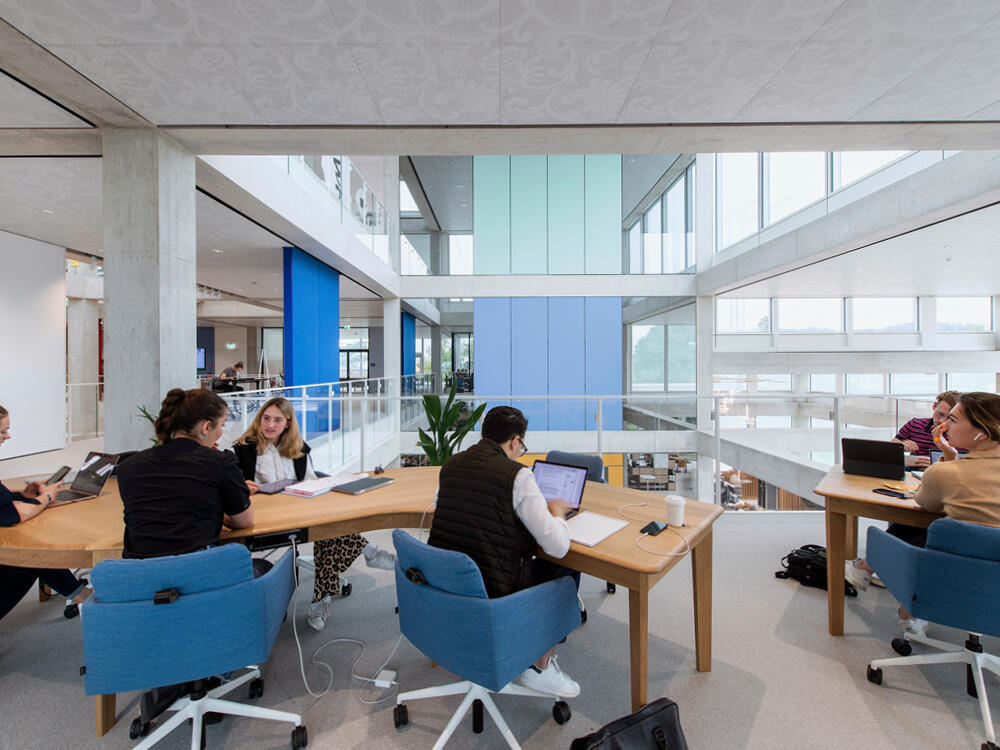
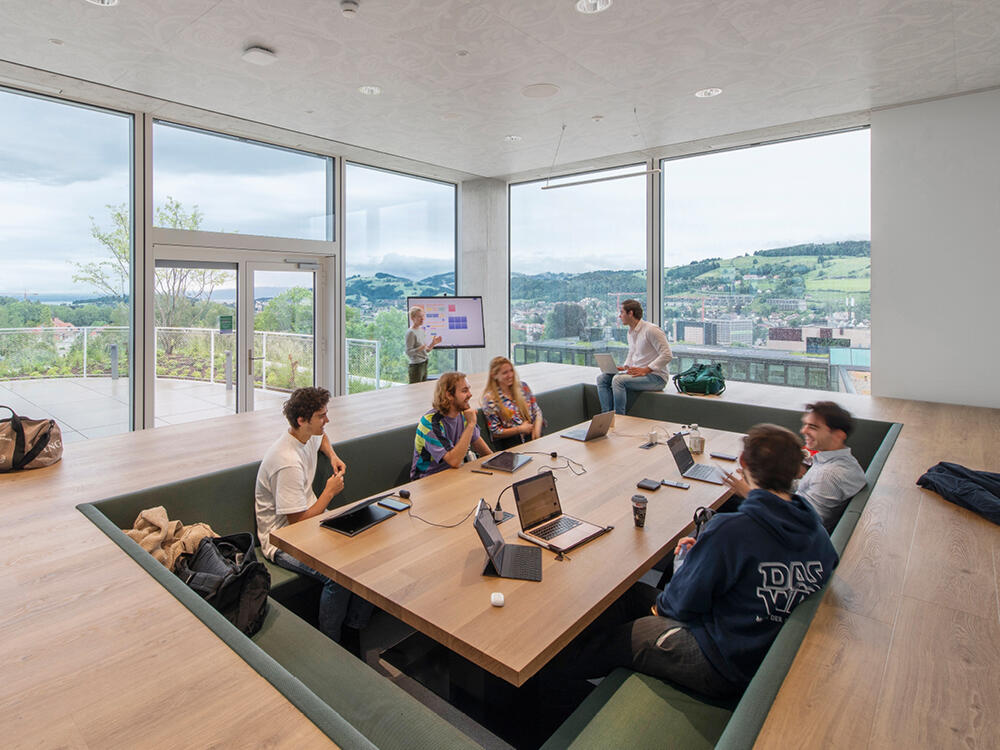
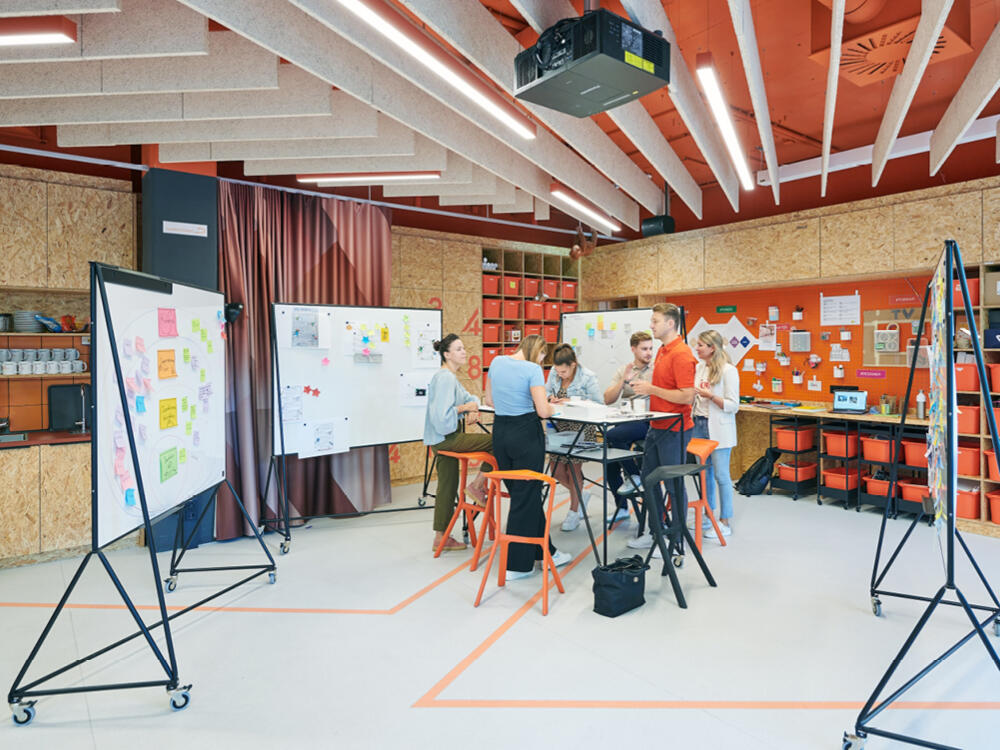
Existing knowledge of how physical space can support and enhance learning and cognitive performance has not been reflected, so there’s a lot of catching up to do.

